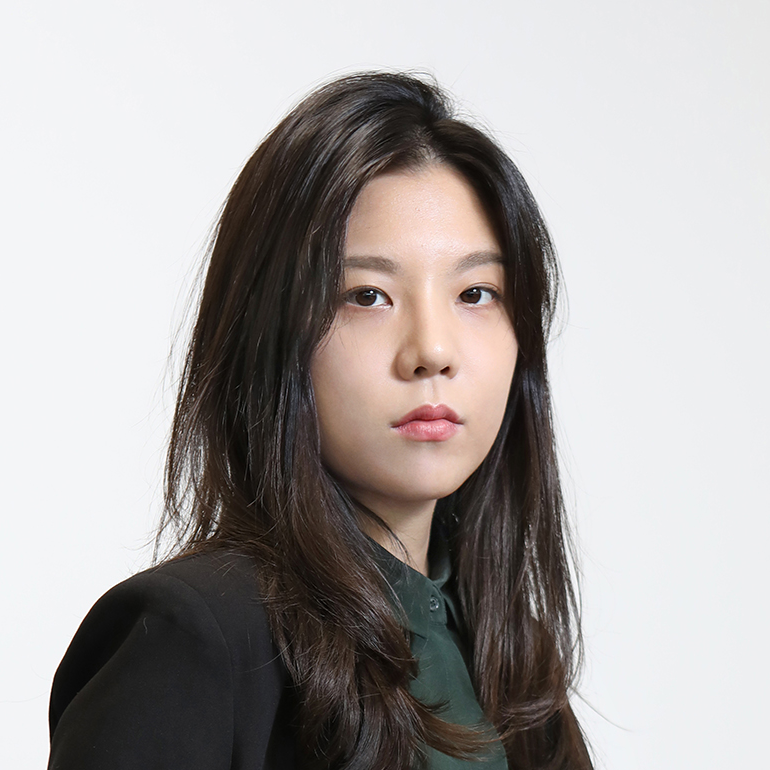Feeling the squeeze, patching Ts: Consumers create unique looks amid inflation
Published: 05 Jun. 2024, 16:30
Updated: 05 Jun. 2024, 16:43
-

- LEE JAE-LIM
- lee.jaelim@joongang.co.kr
![People customize their one-of-a-kind T-shirts at the Hazzys flagship store in Myeong-dong, central Seoul. [LF]](https://koreajoongangdaily.joins.com/data/photo/2024/06/05/ee56a1d4-4a4f-4e12-a4d2-24213157d65a.jpg)
People customize their one-of-a-kind T-shirts at the Hazzys flagship store in Myeong-dong, central Seoul. [LF]
A store bursting with vibrant decorations under dazzling lights caught the attention of passerby, with curiosity growing as the place was packed with people on a sunny afternoon in June.
Situated in the Hondgae area in Mapo District, western Seoul, the shop sells “wappens” — a term for a crest that was attached to a medieval knight’s shield, which also now applies to decorations for clothing or hats.
The store was crowded with young couples, students, families with young children and foreigners all picking out their wappens, priced between 1,000 won (72 cents) and 4,000 won each. They consist of embroidery patches with numerous designs, straps and plastic decorations for shoes known as Jibbitz. Plain T-shirts, hats or pouches can be purchased and the chosen wappens sewn or pressed on to complete a uniquely personalized item.
A 27-year-old office worker surnamed Kim who was at the store selecting letter patches for a travel bag told the reporter that he enjoys this process because it’s an expression of his individuality.
“Due to inflation, everything became a bit more expensive, so it’s nice to decorate what I had before and use them as if they are new,” Kim said.
A 17-year-old named Kwon Ji-min who was visiting with her family said that she has been to the store numerous times to find things to decorate her diaries and shoes.
“It’s fun to pick them out,” Kwon said.
The latest trend among young Koreans is personalizing their belongings to match their individual tastes. Originally stemming from decorating diaries and phones, this trend has now extended to items like bags, shoes, T-shirts, hats and keyrings.
According to the online fashion mall Ably, the transaction volume for its shoe decoration products skyrocketed 160 percent in May compared to the year before. The transaction volume for pearl decorations and shoelaces increased by 17 times and seven times on year, respectively.
“Due to a prolonged economic slump and inflation, more consumers are adding small touches to their existing items to use them as entirely new products,” said an anonymous fashion industry insider. “This trend also reflects the desire to own one-of-a-kind, cost-effective items instead of limited luxury editions.”
The fashion and beauty industries have been quick on their feet to hop on the personalization trend.
Fashion retailer LF’s casual brand Hazzys opened a flagship store in Myeong-dong in central Seoul last month featuring an experience zone on the first floor where customers can customize their T-shirts and keyrings. A daily average of 50 customers participated in the zone, using silk screen printing techniques to apply graphics of the brand’s symbols, such as dogs and British motifs, on the clothing.
Recently, LF employees were given a mission to decorate their own shoes within a 20,000 won budget per person by scouting for accessories in Dongdaemun District, eastern Seoul — which the retailer uploaded as a content on its YouTube channel.
“I could create a unique style using less money than needed for ready-made decorations,” one of the employees said. “I was proud of the responses that said they wanted to try the customization for themselves or that they used it as a reference to decorate their own shoes.”
Adidas Korea rolled out a personalization service in April allowing consumers to embroider or stick patches on their shoes, known as “Made For You.” Lotte Department Store collaborated with the footwear company Crocs to open a pop-up store where visitors can decorate their footwear with Jibbitz charms.
“This phenomenon arises from a combination of the desire to find something unique amid a flood of standardized products, the need to learn and create during times of high inflation, and the culture of sharing DIY methods and photos on social media,” observed psychology professor Kwak Geum-joo of Seoul National University.
BY CHOI EUN-KYUNG [lee.jaelim@joongang.co.kr]










with the Korea JoongAng Daily
To write comments, please log in to one of the accounts.
Standards Board Policy (0/250자)